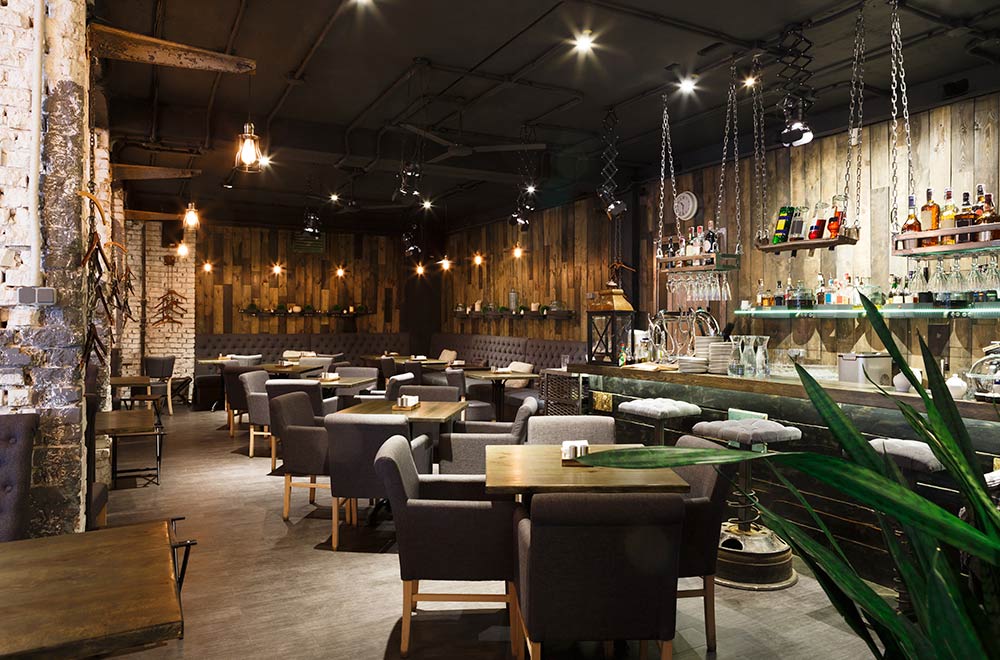Savor Authentic Eastern Cuisine With a Pan-Asian Twist for a Cooking Experience
Starting a culinary journey with genuine Oriental cuisine, enhanced with a Pan-Asian twist, uses a special chance to discover the rich tapestry of tastes that specify the region's diverse cooking customs. This experience welcomes you to relish the beautiful equilibrium of preferences-- wonderful, salty, spicy, and sour-- balanced by fragrant herbs and flavors. Think of the ingenious combination of Thai curry and ramen or the unanticipated joy of sushi burritos. As you contemplate these attracting recipes, take into consideration the social narratives and historic impacts that form them, each bite using a story waiting to be uncovered.

Checking Out Pan-Asian Flavors
In the world of global gastronomy, Pan-Asian food stands out for its remarkable variety and the harmonious interaction of flavors from different Oriental societies. This culinary technique celebrates the abundant practices and one-of-a-kind components located throughout the continent, creating a tapestry of tastes that is both intriguing and satisfying. Trick to Pan-Asian food is its capacity to balance different tastes-- sweet, salty, spicy, and sour-- while highlighting the quality and quality of each component.
From the umami-rich soy sauce of Japan to the intense chili peppers of Thailand, Pan-Asian food provides a comprehensive combination of tastes. These components are commonly combined in innovative methods, enhancing dishes with layers of complexity. For circumstances, making use of fragrant herbs such as lemongrass and cilantro, typical in Vietnamese and Thai food, includes a revitalizing brightness to dishes, while the consolidation of coconut milk provides a velvety, abundant appearance.
The focus on fresh fruit and vegetables and fragrant spices makes sure that each dish is not just a banquet for the preference buds but also for the senses. Pan-Asian cuisine invites diners to start a culinary journey, exploring the huge and differed landscapes of Asian gastronomy with every bite.
Blend Dishes to Attempt
While Pan-Asian cuisine is celebrated for its typical flavors, the modern-day cooking landscape is progressively accepting fusion meals that blend these timeless elements with impacts from various other areas. This innovative strategy not just honors the abundant heritage of Oriental culinary arts however likewise introduces novel preference experiences that interest modern tastes.
An archetype of such a fusion meal is the Korean-Mexican taco, where marinaded bulgogi beef is covered in a cozy tortilla, covered with kimchi and a zesty gochujang-infused salsa. This mix weds the vibrant, full-flavored tastes of Korea with the vibrant, fresh components of Mexican food. Likewise, sushi burritos have obtained appeal, joining together the delicate virtuosity of Japanese sushi with the hearty, hand-held ease of a burrito, frequently including blend components like tempura shrimp and avocado with a drizzle of wasabi mayo.
One more notable recipe is Thai curry ramen, which instills the creamy, fragrant seasonings of Thai curry into the comforting broth of typical Japanese ramen, developing a harmonious mix that entices the senses. These fusion meals extend beyond mere uniqueness; they represent a culinary discussion in between cultures, encouraging exploration and innovation on the planet of Pan-Asian cuisine.
Crucial Ingredients and Seasonings
To truly value Pan-Asian food, one need to understand the crucial ingredients and seasonings that create its structure. This diverse culinary design draws from an abundant tapestry of Eastern traditions, employing a harmonious blend of appearances and tastes.
Fragrant aspects are essential, with lemongrass, ginger, and garlic being ubiquitous throughout different Pan-Asian dishes. These ingredients give a fragrant base that enhances the intricacy of tastes. Spices such as celebrity anise, cardamom, and cinnamon present heat and character, resembling impacts from areas like China and India.

Food Preparation Techniques and Tips
Mastering the art of Pan-Asian cuisine needs experience with its distinct cooking techniques, each contributing to the lively tapestry of tastes this culinary custom is celebrated for. Central to these techniques is the stir-fry, a fast food preparation strategy that maintains the nutritional stability and vivid colors of ingredients. Utilizing a wok, the stir-fry approach permits even heat circulation, crucial for achieving the particular texture and taste equilibrium of Pan-Asian dishes.
Another fundamental technique is steaming, specifically prevalent in Chinese cuisine. This mild approach preserves the natural tastes and nutrients of components, making it suitable for fish and shellfish and veggies. Dumplings, a precious staple, frequently gain from steaming, resulting in soft, delicious structures.
Cooking, additionally important, passes on smoky midsts to meals such as Oriental bulgogi or Japanese yakitori (pan asian restaurant Islamabad). This strategy ichiban frequently includes marinading ingredients, allowing tastes to pass through deeply prior to cooking over an open fire or hot plate
Last but not least, understanding the art of stabilizing flavors-- sweet, sour, salty, bitter, and umami-- is important. Appropriately layering these elements can boost a recipe from average to remarkable, offering a facility and satisfying culinary experience that personifies the significance of Pan-Asian food.
Dining Experiences Worldwide
Across the world, Pan-Asian cuisine supplies an unparalleled eating experience, celebrated for its abundant tapestry of flavors and lively discussions. This culinary sensation has gone beyond cultural limits, catching the hearts and palates of food fanatics worldwide. In cosmopolitan cities fresh York, London, and Sydney, Pan-Asian restaurants serve as fusions where culinary customs from Thailand, Japan, China, and past converge, providing diners with a diverse mix of dishes that highlight the region's diversity.
The global charm of Pan-Asian cuisine exists in its capacity to offer both authenticity and advancement. Chefs masterfully marry standard active ingredients such as lemongrass, soy sauce, and miso with modern strategies, causing recipes that are both acquainted and refreshingly new. This fusion enables restaurants to start a culinary journey that values heritage while accepting modernity.
Additionally, eating experiences are raised with thoughtfully made settings that mirror the values of Pan-Asian aesthetic appeals. From minimal Japanese-inspired interiors to vibrant Thai-themed rooms, each dining establishment uses an one-of-a-kind ambiance Home Page that enhances the cooking offerings. Because of this, patrons are not merely consuming a dish yet partaking in a social experience, making Pan-Asian dining a truly global sensation.
Final Thought
The exploration of Pan-Asian cuisine supplies an extensive understanding of the intricate interaction of flavors and culinary traditions throughout Asia. By embracing blend meals such as Thai curry ramen and sushi burritos, the culinary trip not just highlights the adaptability of conventional ingredients however likewise showcases innovative modern-day methods. This gastronomic adventure, enhanced by cooking methods and crucial seasonings, supplies an unique opportunity to value the cultural diversity and cooking artistry that define Pan-Asian food on a global range.
Embarking on a culinary trip with authentic Oriental food, boosted with a Pan-Asian twist, supplies a distinct opportunity to discover the rich tapestry of tastes that define the region's varied cooking traditions.In the realm of international gastronomy, Pan-Asian cuisine stands out for its exceptional variety and the unified interaction of tastes from numerous Asian cultures. Key to Pan-Asian food is its capability to stabilize contrasting tastes-- wonderful, salty, find out spicy, and sour-- while highlighting the quality and quality of each active ingredient.
